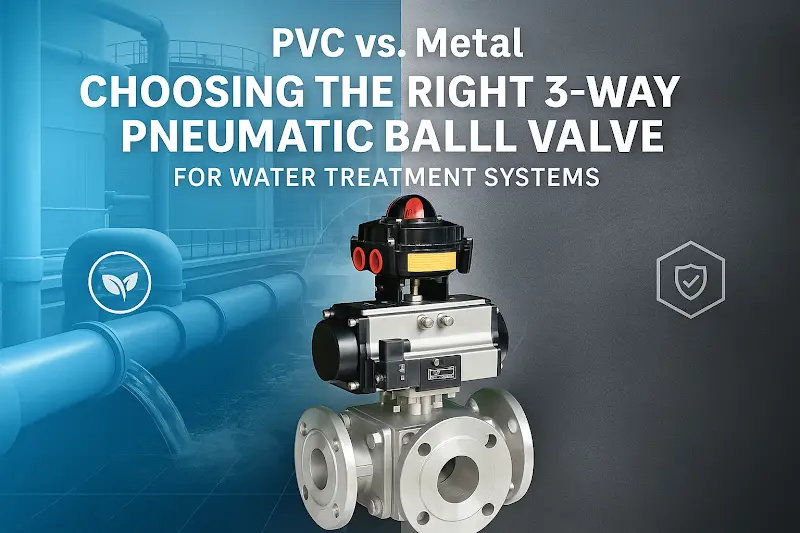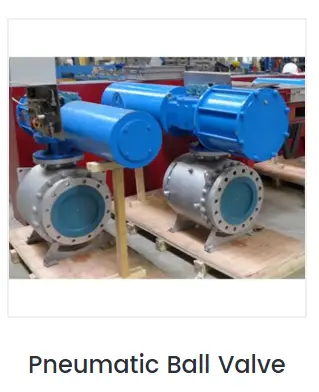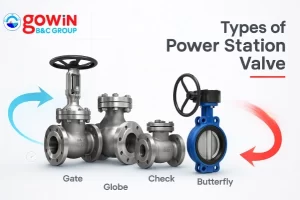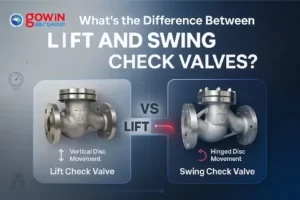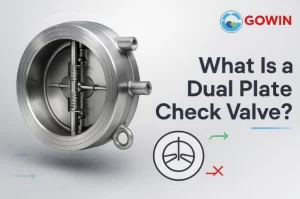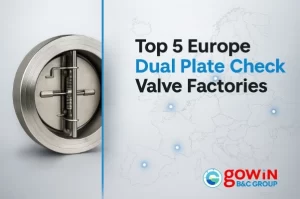Table of Contents
TogglePVC 3-way pneumatic ball valves excel in corrosive, low-pressure water treatment applications due to superior chemical resistance and cost-effectiveness. Metal valves, on the other hand, become essential for high-pressure, high-temperature systems that demand maximum durability and long-term reliability.
PVC vs. Metal 3-Way Pneumatic Ball Valve Comparison
The right material choice depends entirely on your operating conditions. While both materials serve water treatment applications effectively, their performance characteristics differ significantly across key areas.
| Feature | PVC 3-Way Pneumatic Ball Valve | Metal 3-Way Pneumatic Ball Valve |
| Cost | $300-800 per valve | $600-1,500 per valve |
| Pressure Rating | Up to 150 PSI maximum | 150-1000+ PSI depending on grade |
| Temperature Range | -15°C to 60°C (5°F to 140°F) | -40°C to 220°C (-40°F to 428°F) |
| Corrosion Resistance | Excellent against most water treatment chemicals | Superior resistance, especially 316 stainless steel |
| Weight | 40-50% lighter than metal | Heavier, requires structural support |
| Service Life | Varies widely by application conditions | Generally longer with proper ma |
Cost Considerations
PVC ball valve water treatment systems deliver immediate cost savings. Valves typically cost 40-60% less than metal alternatives, making them attractive for large-scale municipal installations.
Beyond initial purchase price, installation costs also favor PVC. A typical pneumatic 3 way PVC ball valve weighs 40-50% less than equivalent metal units. This reduces both labor requirements and structural support needs during installation.
That said, the total cost of ownership depends heavily on application conditions. Metal valves often provide better long-term value in demanding applications where premature PVC failure could cause costly downtime.
Durability and Longevity
Metal construction clearly wins on mechanical strength. Stainless steel valves handle frequent cycling, pressure fluctuations, and physical impact far better than PVC alternatives. This makes them ideal for demanding industrial water valves applications.
PVC offers excellent chemical durability in the right environments. However, it shows clear limitations under mechanical stress. High-pressure applications or systems with frequent thermal cycling can cause premature failure through cracking or deformation.
When it comes to service life, actual performance varies significantly based on water chemistry, operating cycles, and maintenance practices. PVC valves can serve for many years in suitable applications, while metal valves typically offer longer service intervals when selected adequately for the application conditions.
Pressure and Temperature Performance
Operating conditions often determine material selection for you. PVC handles typical municipal water pressures safely up to 150 PSI maximum, but exceeds safe operating limits above this pressure or temperatures over 140°F.
In contrast, metal valves handle extreme conditions much better. High-pressure reverse osmosis systems operating at 300-600 PSI, steam sterilization processes, and industrial heating applications all need metal valve construction for safe operation.
The pneumatic 3 way ball valve water service application ultimately determines which material will work. Standard filtration and softening systems operate well within PVC capabilities. Meanwhile, membrane systems and industrial processes typically demand metal construction for safety and regulatory compliance.
Chemical Resistance
PVC provides outstanding resistance to many water treatment chemicals, including chlorine, sodium hypochlorite, and most acids and alkalis. However, compatibility testing is essential, as some specialty biocides and organic compounds can attack PVC materials.
Metal valves offer broader chemical compatibility, particularly high-grade stainless steel alloys like 316L. While more expensive, these materials handle aggressive chemicals and industrial solvents that would eat away at PVC over time.
Testing chemical compatibility is essential when choosing between metal vs plastic valves for applications involving specialized treatment chemicals or industrial process fluids beyond standard municipal water treatment.
Installation and Maintenance
PVC’s lightweight nature simplifies installation procedures and reduces project complexity. Many PVC designs feature true union construction allowing easy valve removal without disturbing connected piping systems.
Metal valves require careful handling and proper structural support during installation. However, their robust construction tolerates installation stresses and provides more predictable failure modes when maintenance becomes necessary.
Maintenance requirements vary by application severity. PVC valves need minimal routine attention in standard water treatment but may require frequent seal replacement in abrasive or high-pressure service.
Choosing the Right 3-Way Pneumatic Ball Valve
Valve selection depends on specific operating conditions, budget constraints, and performance requirements within your water treatment system.
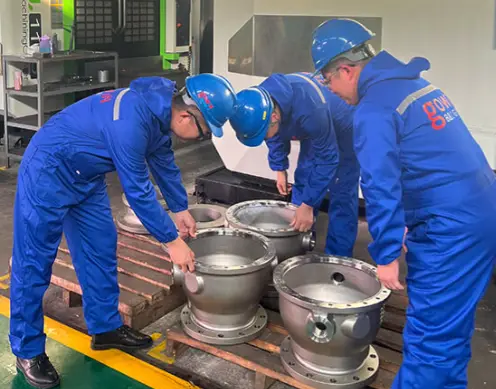
Choose PVC when:
- Operating pressures remain consistently below 150 PSI
- Temperatures stay under 140°F throughout operation
- Chemical exposure involves standard water treatment compounds
- Budget considerations are the primary concern
- Installation simplicity reduces project complexity
Choose metal when:
- High-pressure or temperature conditions exist
- Maximum mechanical durability is required
- Broad chemical compatibility is needed
- Long-term reliability justifies a higher cost
- Safety margins are critical for operation
It Comes Down to Application Requirements
The decision between PVC and metal construction ultimately depends on matching valve capabilities to actual operating conditions. PVC delivers exceptional value in standard water treatment scenarios involving typical pressures, temperatures, and chemicals.
Metal construction becomes essential when operating parameters exceed PVC limitations or when maximum reliability is required. The higher initial investment often proves worthwhile through reduced maintenance, longer service life, and enhanced safety margins.
Quick Questions to Ask Yourself
- What’s your maximum operating pressure? If over 150 PSI, choose metal.
- What’s your highest operating temperature? If over 140°F, choose metal.
- Is this a fire-rated or safety-critical application? If yes, choose metal.
- Do you handle specialty chemicals beyond standard chlorination? If yes, test compatibility first.
- Is budget your primary concern? If yes, choose PVC (if conditions allow).
- Will frequent maintenance access be difficult? If yes, choose metal for longevity.
Making the Smart Choice for Your System
Successful valve selection requires balancing performance requirements against budget realities while ensuring safe, reliable operation. PVC 3-way pneumatic ball valves serve the majority of water treatment applications effectively while delivering significant cost advantages.
Metal construction becomes necessary when operating conditions demand higher pressure or temperature ratings, or when maximum reliability is required. At GOWIN Industrial Valve, we help engineers choose the right valve for their specific water treatment needs. Learn more about how pneumatic ball valves work and explore our pneumatic ball valve for water treatment applications.
Frequently Asked Questions
Do PVC valves work well with pneumatic actuators in all conditions?
Pneumatic actuators can stress PVC valve bodies during rapid cycling or high-torque operations, potentially causing premature cracking around mounting points in demanding applications.
What fire safety codes affect valve material selection in water treatment?
Many industrial facilities require metal valves in fire-rated systems or emergency water supplies, regardless of operating conditions, due to fire safety regulations and insurance requirements.
How does water chemistry affect long-term valve performance?
Chloramines, high-temperature sanitization cycles, and pH extremes can degrade PVC faster than expected, while certain water chemistries may cause pitting in lower-grade stainless steels.
Are there applications where neither PVC nor standard metal valves work well?
Highly abrasive slurries, extreme chemical combinations, or cryogenic applications often require specialty materials like Hastelloy, ceramic-lined, or exotic alloy construction beyond standard options.

